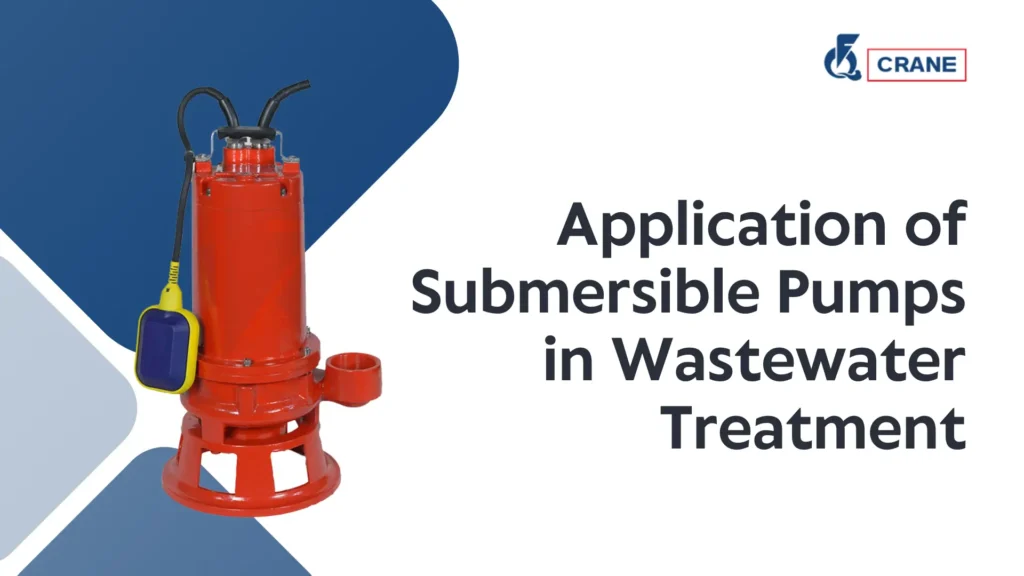Maintaining public health and safeguarding the environment today calls for a proper treatment of wastewater.
Among the technologies in use today are submersible pumps. The primary goal of this paper is to outline what submersible pumps are, their roles in wastewater treatment, their practical applications and more importantly the factors that need to be considered when selecting a proper submersible pump.
Learn More:
- 6 Applications of High-Efficiency Submersible Pumps
- Characteristics of Industrial Submersible Pumps
- Promotional Article on Sewage and Wastewater Submersible Pumps
What is Submersible Pump for Wastewater ?

Features and Operations
A submersible pump is a pump that is made or designed for being able to function while fully submerged in a liquid. It is especially useful for wastewater handling. Such pumps are also known as end-suction column pumps. These can work even when fully submerged in a liquid to effectively extract sewage from tanks for example, sewage or sump pits, without the motor coming into contact with the sewage itself. They are usually designed to effectively pump different liquids including waste water.
Different from Other Types of Pumps
Submersible pumps, rather than ordinate pumps are fixed within the liquid and are not far from the liquid surface. This allows them to much easily and efficiently carry waste water for long range especially with little power consumption. Additionally, cavitation which is usually a major problem to other types of pumps is less common in submersible pumps.
Outline of Efficiency
Submersible pumps have gained immediate acknowledgement from the public mainly because of over-perform efficiency. These pumps will lift a lot of sewage with less use of horse power centimeters as compared to the regular lift pumps. In addition, the efficiency measures of these types of pumps will also help to better economic factors and reduce energy losses as well as alter the effects on the environment in suggestion of claims for the use submersible pumps for the treatment of wastewater.
Importance of Wastewater Treatment
Why is Wastewater Treatment Necessary?
Cleaning of waste water is an indispensable activity for the sake of removing detrimental substances from water before releasing into the environment.
This is necessary for the prevention of public health-related diseases which would be transmitted through water, as well as for the safety of the aquatic life from pollution due to man made activities.
Environmental Benefits of Proper Treatment
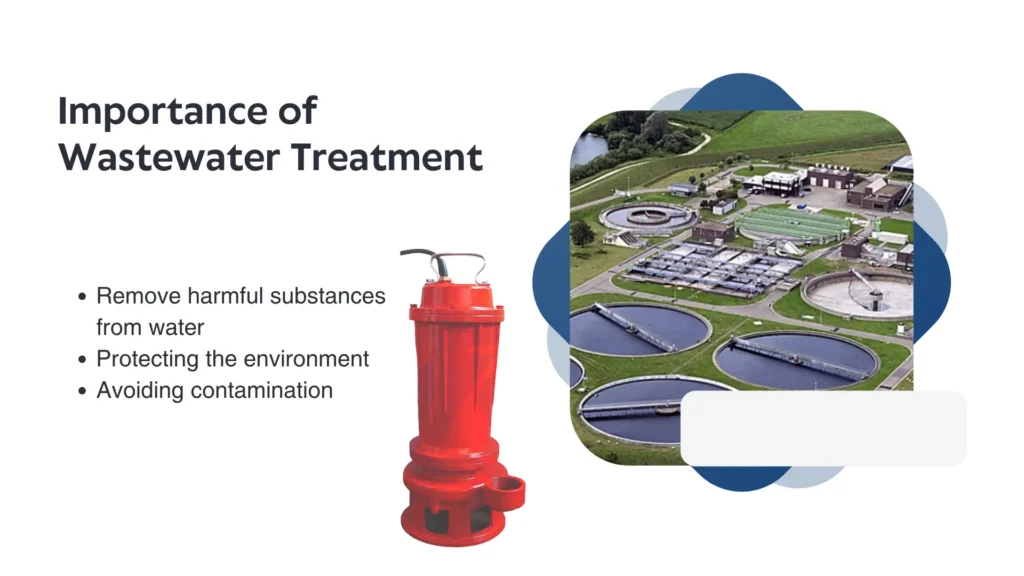
Efficient waste water treatment systems allow for the conservation and proper management of clean water, aiding in the promotion of healthy ecosystems.
Effluent water can be used in agriculture and other industrial processes once treated hence avoids wasting of more freshwater resources.
Economic Impact of Wastewater Management
Integration of waste-treatment systems into the economic-socios energies of the said are bracket, first activates the channels of the waste discourse, secondly regulates them, and, finally, legalizes the inclusion of waste – treatment expenses in the capital structure.
Types of Wastewater
Domestic Wastewater
Domestic wastewater, a product of households, includes sewerage within residences, toilets, sinks, showers, and clothes or dish washing machines.
Usually, it contains pollutants like organic matter, pathogens, and nutrients, which warrant treatment before disposal.
Industrial Wastewater
Industrial wastewater is wastewater lost as a result of any activity concerned with the manufacturing.
These activities include use of chemicals, metals and other contaminants that would contaminate water body.
This type of water should be recovered according to environmental laws.
Commercial Wastewater
Commercial wastewater for its name, is waste from business oriented institution such as restaurants and other commercial buildings.
The commercial wastewater waste consists of food and its remnants, especially oils and detergents.
Appropriate treatment of such wastewater is needed to keep these items from causing pollution in the room they are in.
Agricultural Wastewater
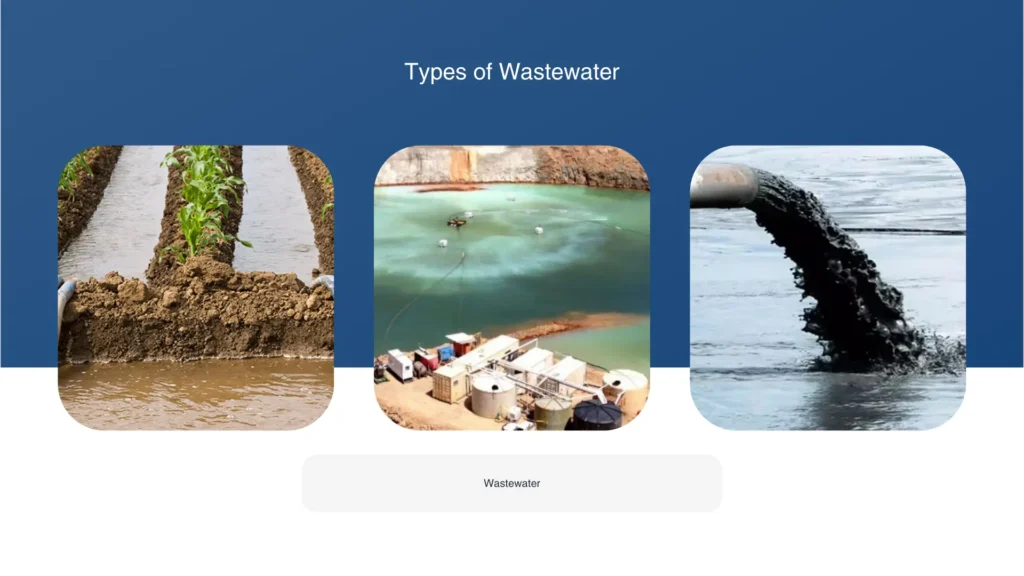
Farmers’ nutrient waste produces agricultural wastewater which leads to water pollution.
Such water may contain fishing shelters where fertilizers, chemicals and animal farms are located.
The application of all these contaminated waters above without solutions might create an ‘algae boom effect’ or even destroy the entire river system.
Municipal Wastewater
Municipal wastewater involves treating wastewater from human environments which includes the liquid and solid waste embedded on the sewage system, in a bid to ensure a safer society.
Construction Wastewater
As the name suggests, building trades or any allied industrial activities are responsible for the generation of various types of wastewater in the process of carrying out specific tasks.
At times due to a lack of proper management wastewater from these operations, will lead to pollution risk of the area into which construction of related works is carried out.
Mining Wastewater
Simply, mining water can be classified as treated water expected to contain a limited amount of precious metallic sparked material (PMSM) along with some potentially hazardous ingredients.
Because of the components of types of mine already mentioned the gold and copper infested mines they are expected to have tailings Installations.
Role of Submersible Pumps in Wastewater Treatment
Economically Fueling Engines
When it comes to transferring waste matter, a submersible pump is an efficient means that is most commonly employed.
These are created in a manner that they can transport sacs quite efficiently and they have no limitations in terms of the quantity of fluids that they can handle and because of this, they can be used in a variety of fields.
Dealing with Waste in Solid Form
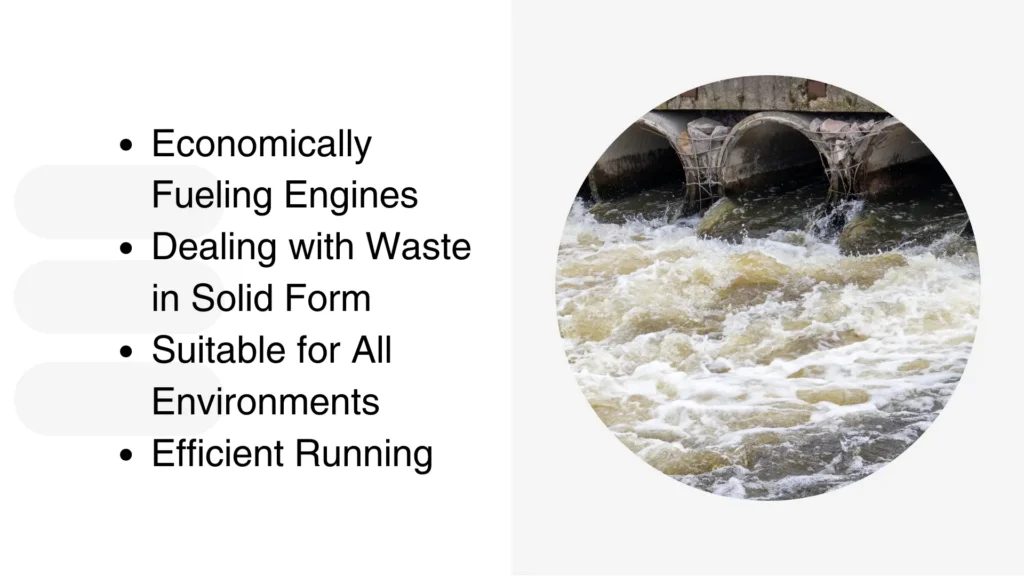
Most of the submersible pumps contain certain parts that are used to move or evacuate the solid waste present in the waste water like debris and sludge etc.
This is a must carry out this practice in waste water treatment.ola this is must practice in waste water treatment as the generation of solids is quite high.
Suitable for All Environments
Submersible pumps are quite convenient as they can function in any environment no matter the kind of fluid and the temperature.
This means that they can be applied in various ways especially in the disposal of wastewater.
Efficient Running
The energy consumption of submersible pumps is a source of significant savings for wastewater treatment plants.
Besides this, they are immovable and can never be removed because one will not feel blame of it alone.
Subsequently, the maintenance of such poverty alleviation facilities is extremely reduced.
Applications of Submersible Pumps for Wastewater
Residential Septic Systems
In residential areas, submerged pumps are used in sump basins and in the sewage treatment facilities area in order to deal efficiently with wastewater. The primary function of these pumps is to make sure that all the sewage is dispatched to the treatment plant in a reliable manner with no chances of flooding or corrosion.
Metropolitan Waste Water Treatment
If not all of the schemes can be made decentralised, the most plausible approach would be to locate wastewater submersible pumps inside wastewater treatment plants that are built on the banks of the rivers where the effluent is disposed. These have been found to be particularly useful in the secondary treatment of this waste as the raw sewage is generally solids and requires to be broken down first prior to its treatment.
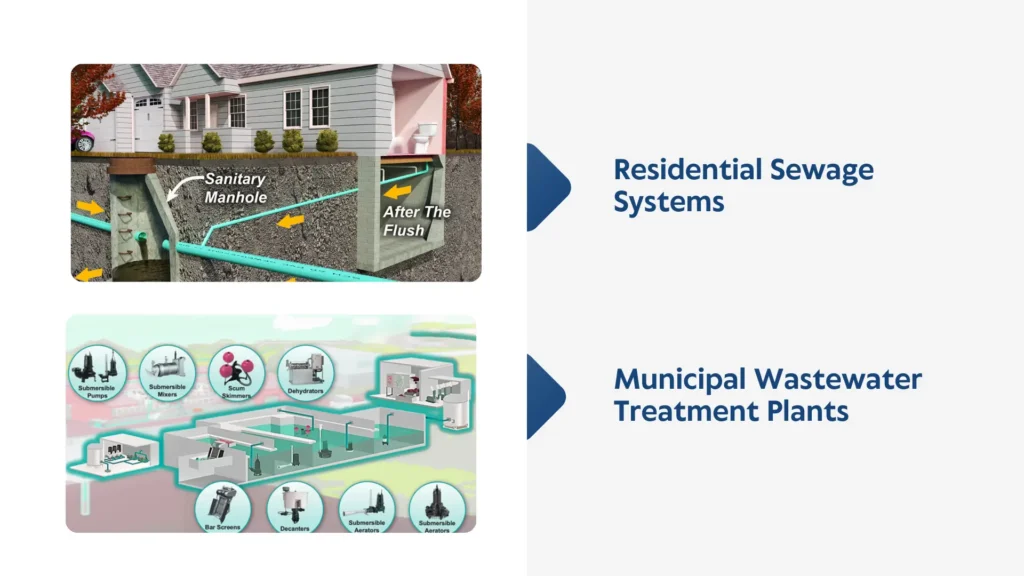
Industrial Uses
By applying submerged pumps industrial processes can be effectively controlled by the treatment of the wastewater that is formed. This inorganic technology ensures good performance capabilities even when a mix of various waste is industrial in its applications.
Features to Look for in Submersible Pumps for Wastewater
Pump Structure and Materials
If it is a decission to install a submersibly pump in sewage, it is important to consider its design and materials – it is advisable that immadulatyular constructed submersible pumps are chosen so as to ensure more operating hours especially in the aggresive environment of a sewage treatment plant.
Head and Rated Duty Point
These are the various capacity described by the flow rate and head required at both ends depending on the pump. One will not like it delivering excess flow or capacity and not covering the distances it should cover in the wastewater system.
Efficiency of Power Utilization
Opt for energy-efficient submersible pumps that can be operated at levels of energy consumption that save costs. Energy saving pumps help in reducing the consumption of the energy needed to pump water and at the same time represent a healthier waste water management techniques.
Services Provided After Sales
Post sales services for the product are imperative. It would be very frustrating if you bought the system and you were stuck without necessary support services in case of a breakdown. Access to such services as maintenance and servicing should also be made available without much hassle to reduce down time and breakdowns occurrence of the system efficiency of this collection setup.
Common Challenges and Solutions
Causes of Clogging and How to Fix Them
Submersible pumps work well when handling liquid substrates beams, which might be sludge.
One of the notable limitations associated with their application is the blockage caused by the particulate matter.
Regular maintenance and the use of grinders or macerators can help mitigate this issue.
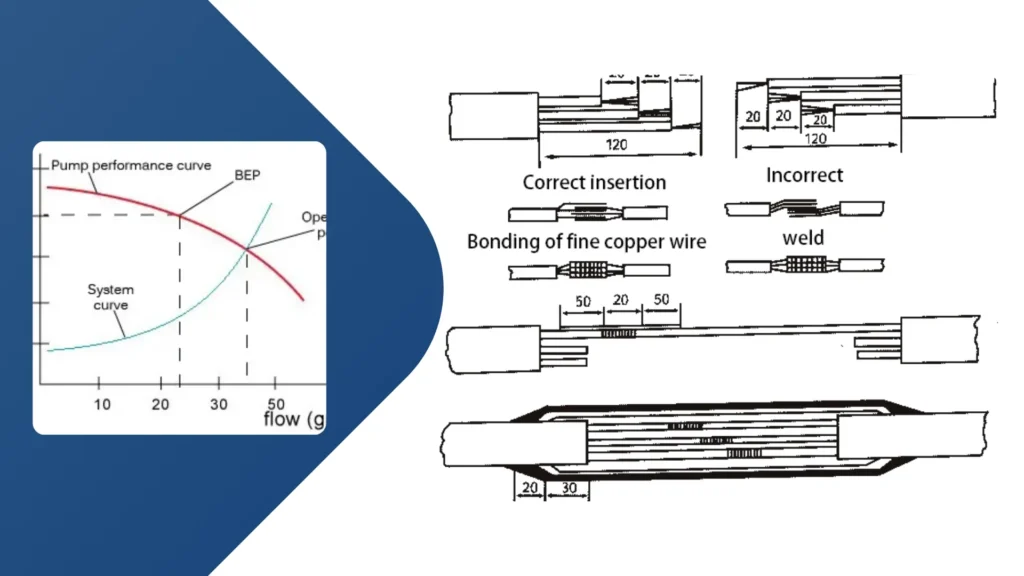
Minimum of Aspects
When it comes to the use of submersible pumps is of course safety on the job, to have the greatest care.
Construct your pumping system to the inclusion of all safety measures and substantiate pumps with safety stipulations.
Pump Sizing and Selection
Selecting the right pump size is critical for optimal performance under specific firm conditions.
Engineer help should be sought in the determination of the technical capabilities that best suit the use of a pump.
What Can Be Done to Resolve This Issue
When there is a need to carry out some maintenance work on the pump, make sure you read the manufacturer’s instruction.
These regular maintenance checks will avoid many common pump complications and make sure it is working properly.
Conclusion

The use of submersible pumps in wastewater treatment comes with a series of advantages including, energy saving reducing the footprints on the land for construction and the low operating cost.
Seeing how technology has developed and with its future development visibility, there will be improvement in the organization of pumping and the work efficiency there will also be advances in the automation of the process on the last treatment.
When choosing submersed pump envisage what service you goal is interested, its where it will be used, how much of liquid it is supposed to take, can it be under constant stress and how often it should be serviced.
Personal interactions can help you make appropriate selection in respect of your needs for waste water treatment.
Once you have an overview of the role of submersible pumps in water and sewage disposal systems it becomes relatively easy to make choices that help promote the practices that are effective and sustainable in the management of water.

